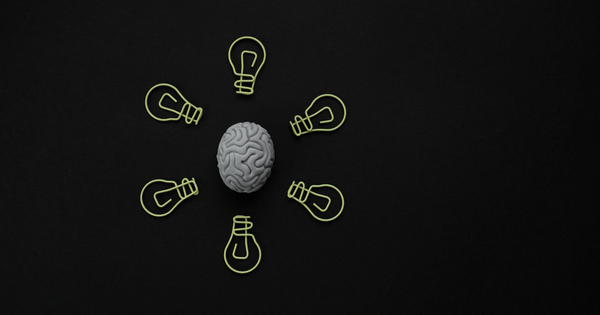This article is based on Richard Shotton’s talk at the Product Marketing Summit in London. As a PMA member, you can enjoy the complete recording here. For more exclusive content, head over to your membership dashboard.
Hey there, I’m Richard Shotton and I've been immersing myself in the exciting field of behavioral science for the last 15 to 20 years. I've even written two books on the topic: The Choice Factory and The Illusion of Choice.
Today, I’m going to talk about the power of behavioral science and how you can apply it to your pricing strategies.
Let’s get into it.
What is behavioral science?
If you're not familiar with this phrase, don’t worry – it's nothing too complicated. It's essentially what we used to call social psychology – the study of how people actually behave, rather than how they claim to behave.
If you're new to behavioral science, the best summation probably comes from Susan Fiske, a Princeton psychologist, who describes people as “cognitive misers.”
Her colleague Daniel Kahneman puts it a bit more gently:
“Thinking is to humans as swimming is to cats; they can do it, but they'd rather not.“
Neither psychologist is trying to be rude; they're well aware that people have phenomenal rational and logical capabilities. However, for most of human history, energy has been a scarce resource – and thinking requires a lot of energy.
So, when we make decisions, whether personal, consumer, or professional, we usually don't think things through in a deliberate, considered way. Instead, because we're trying to conserve mental effort, we often make fast, reflexive decisions. Psychologists, rather pompously, call these mental shortcuts “heuristics”; you might prefer to think of them as rules of thumb.
As a product marketer, it’s your job to persuade people to change their behaviors, so you need to understand these rules of thumb. People are prone to biases; if you're trying to persuade someone and you're aware of their biases, you're working with human nature rather than against it.
Behavioral science is essentially a giant catalog of mental biases, with hundreds if not thousands of experiments into their nature and how they can be harnessed.
Of course, I can’t cover thousands of behavioral science experiments in a single article, so today I’m going to focus on one specific area of persuasion: how you can apply these insights to shape perceptions of pricing and value.
In other words, I’ll aim to answer this key question: how can you make the same product, at the same price, seem like a much better value?

Using price relativity to shape willingness to pay
One broad theme you’ll notice throughout this article is that people don’t assess value in absolute terms. When considering a product, most people don’t systematically weigh its benefits against its costs – that would be a ludicrously complex calculation!
Instead, because they’re cognitive misers, people unconsciously replace complex calculus with simpler comparisons. More specifically, when evaluating value, people tend to use a relative framework: they quickly think of a set of comparable products and then compare your offer to that set.
In other words, if your product is more expensive, it seems like bad value; if it’s cheaper, it seems like good value. This phenomenon is called price relativity.
The idea that perceptions of value are relative should interest all of us. Why? Because it means that if you can shape your customers’ mental comparison set, you can dramatically change their willingness to pay.
Price relativity in action: The Nespresso example
If we look at the commercial landscape, we see many examples of huge brands skillfully applying behavioral science principles to great effect. I’d argue one of the best examples from the past 20 years illustrating the power of shifting comparison sets comes from Nespresso.
Consider Nespresso’s product launch. They didn’t just stuff coffee grounds into two-pound bags and sell them on supermarket shelves next to tins of Folgers. If they had, Nespresso would look astronomically expensive compared to the competition.
A two-pound bag of Nespresso at current per-ounce prices would cost over $100! Who would pass up a $15 tin of Folgers to grab a $100 bag of espresso? It wouldn’t just seem expensive – it would seem wasteful and even morally questionable. No sane consumer would consider it.
Of course, that’s not what Nespresso did. Instead, they sold coffee in pods, shifting the comparison from bulk coffee brands to a single cup of specialty coffee. As Rory Sutherland has pointed out, this meant that instead of comparing Nespresso to grocery store staples like Folgers, they compared it to coffee chains like Starbucks.
Suddenly, Nespresso’s $1 pod seemed like amazing value next to the $5 Starbucks charges for a latte. It’s the exact same per-gram price, but by subtly shifting the comparison set, Nespresso massively increased people’s willingness to pay.
This simple insight, creatively applied, has generated billions in revenue for Nespresso. And guess what? You can take similar principles and apply them in your business setting to significant benefit.
Harnessing price relativity in an established industry: The trains example
Of course, Nespresso executed this strategy during a new product launch when no preconceived notion of value existed. It’s easier to shape perceptions from scratch; however, with just a dash of lateral thinking, even the oldest product categories can apply the principle of relative pricing.
Let me give you an example from the world of trains – an industry that’s been around for about 200 years. Back in 2019, Deutsche Bahn, the German national railway, wanted to convince citizens to take vacations domestically rather than flying abroad. To do this, they scraped people’s Facebook and search data to see where they were looking at holiday destinations.
If someone in Berlin was checking out trips to Colorado, Deutsche Bahn would show alluring photos of a site like Horseshoe Bend on the Colorado River, overlaying the real-time airfare of €1,156. Then, immediately below, they’d display a remarkably similar-looking location in Germany – in this case, the bend of the Mosel River near Bremm – with the real-time train ticket price of €19.
Now, what would most marketers do to persuade tourists to stay domestic? They’d probably just show pretty pictures of German destinations with the train fares listed.
That’s logical, but what’s the natural comparison? For most people, it’s likely the cost of a tank of gas for a road trip – and €19 (about $20) doesn’t look like great value versus fueling your car. But by introducing an international flight as the reference point, suddenly €19 looks like a rounding error!
That’s price relativity in action. When you change the comparison set, you change customers’ willingness to pay.


 Follow us on LinkedIn
Follow us on LinkedIn

